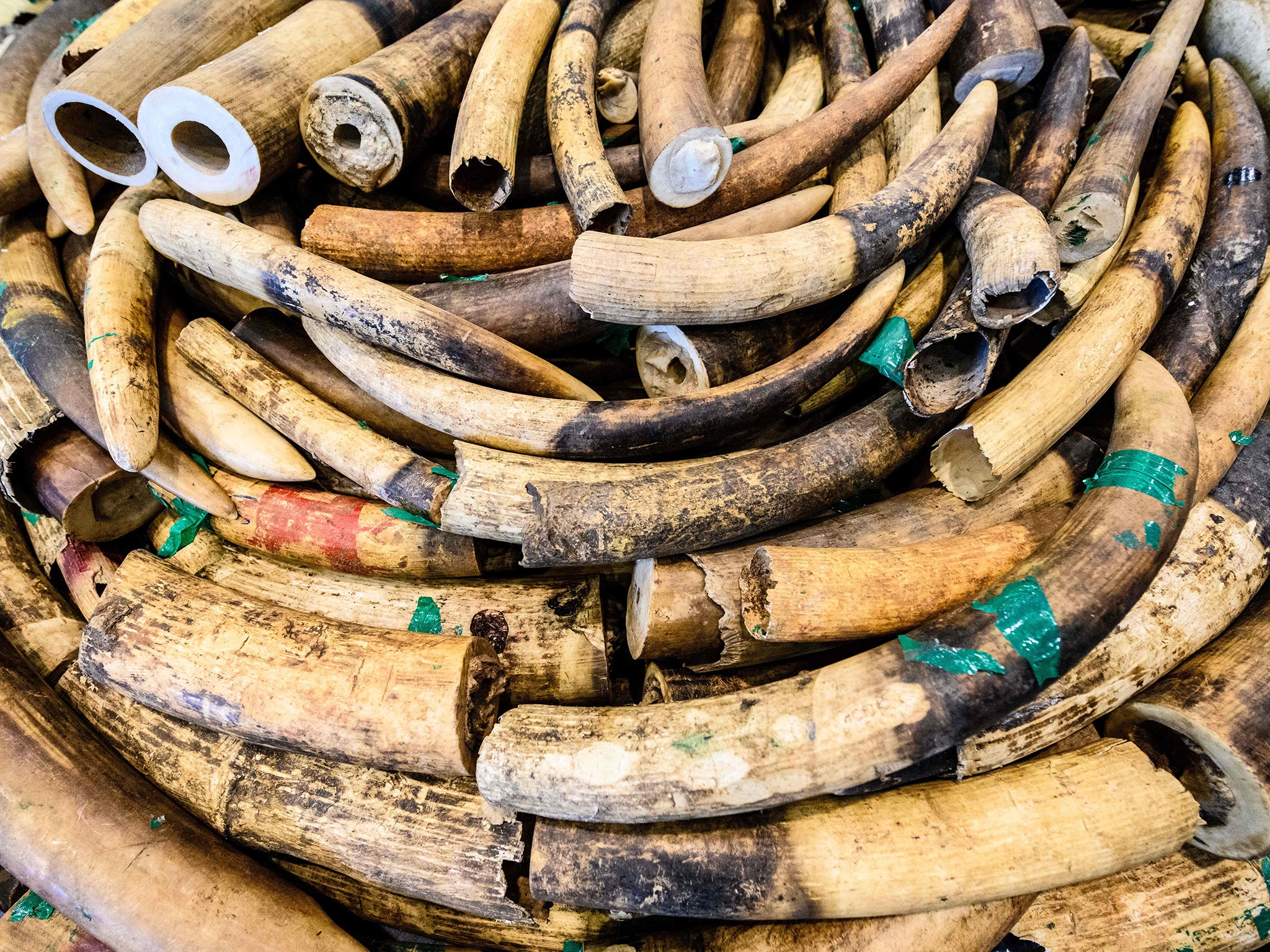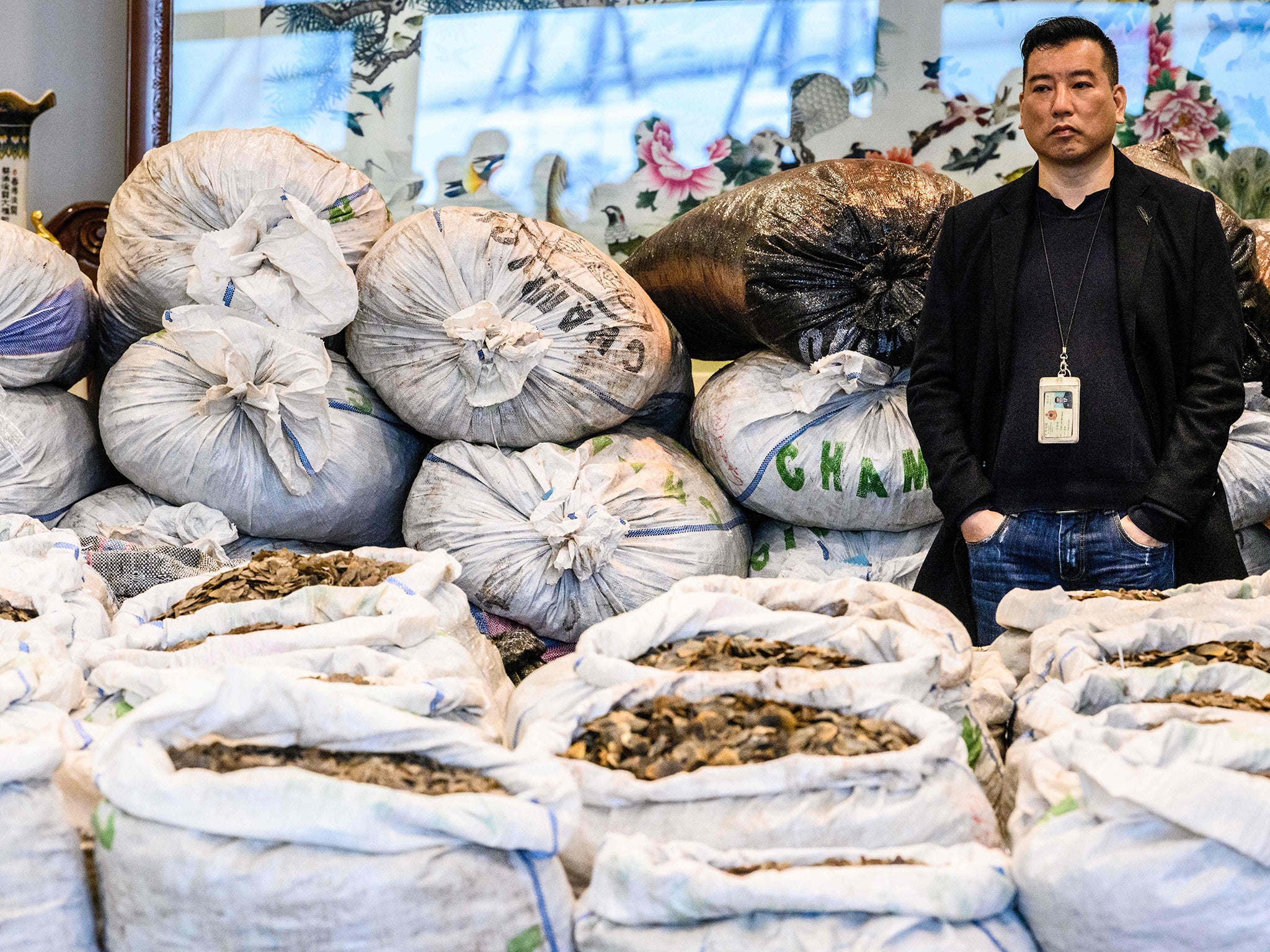Can tech-savvy tools take down illegal wildlife trafficking?
Exclusive: Artificial intelligence and data-driven platforms can disrupt the $23bn-a-year illegal trade as it increasingly shifts into the digital realm

Your support helps us to tell the story
From reproductive rights to climate change to Big Tech, The Independent is on the ground when the story is developing. Whether it's investigating the financials of Elon Musk's pro-Trump PAC or producing our latest documentary, 'The A Word', which shines a light on the American women fighting for reproductive rights, we know how important it is to parse out the facts from the messaging.
At such a critical moment in US history, we need reporters on the ground. Your donation allows us to keep sending journalists to speak to both sides of the story.
The Independent is trusted by Americans across the entire political spectrum. And unlike many other quality news outlets, we choose not to lock Americans out of our reporting and analysis with paywalls. We believe quality journalism should be available to everyone, paid for by those who can afford it.
Your support makes all the difference.The devastating impact of the multibillion-dollar illegal wildlife trade has never been more acute than in the wake of the coronavirus pandemic.
Illegal wildlife trafficking, worth an estimated $23bn annually, has threatened nearly 9,000 species with extinction and for decades served as a low-risk source of income for criminal organisations and terrorist groups.
The Covid-19 outbreak, which has led to more than 221,000 deaths, 3m infections and economic collapse, has focused global attention on the labyrinthine enterprise of wildlife trafficking and how to bring those networks down.
The virus likely originated at a “wet” market in Wuhan, China and early research suggests a pangolin was the intermediate host in the transmission of the zoonotic disease from bats to humans. Pangolins, or “scaly ant-eaters”, are the world’s most trafficked animal. Their scales are used in traditional medicine and their meat is prized as a delicacy, primarily in China and Vietnam.
The International Union for Conservation of Nature estimated in 2016 that 1m pangolins have been taken from the wild.
UN leaders, hundreds of animal welfare campaigners, conservation groups, along with The Independent , have called for an international effort to tackle the illegal wildlife trade.
It may be a historically opportune moment. Travel bans, dwindling resources and a reduction in global and cross-border trade has traffickers on the back foot, according to conversations documented by undercover investigators in a Wildlife Justice report this month.
But the window of opportunity is narrowing as trade opens up and impoverished people are drawn into trafficking and poaching as a means of survival.
“Organised environmental criminal networks increasingly operate like global multinational businesses, connecting local resources to global markets through complex and interlinked networks often embedded in the business community and in government, sometimes including those tasked with protecting wildlife,” according to the United Nations Environment Program (UNEP) and Interpol’s 2016 assessment.
Janjaweed, the Sudanese militia which carried out genocidal rape and mass murder during the Darfur conflict in the early 2000s, has reportedly butchered thousands of elephants in Cameroon, Chad and the Central African Republic to make money from selling ivory, according to Brookings.

The Lord’s Resistance Army in central Africa, which has abducted tens of thousands of children as child soldiers and sex slaves, profits from the poaching of elephants in Uganda, South Sudan and the Congo.
The policing of wildlife crimes has in the past relied on tip-offs and catching traffickers in the act. However, criminal networks are adapting.
“Traditional methods of wildlife trafficking are now much more difficult. Partly because the world is in lockdown and partly because that lockdown makes it easier for law enforcement and others to spot the illegal trafficking," Steve Elliot, managing director of Global Data Analytics firm LexisNexis Risk Solutions and a former detective inspector with the Hong Kong police, told The Independent.
“There’s a real opportunity for markets to become more effective at spotting illicit wildlife trade because an increasing proportion of the selling and distribution is going to take place online.”
Artificial Intelligence (AI) and other tech innovations offer a creative solution to fight traffickers shifting into the digital realm.
AI applies machine learning to vast quantities of data attributes, those with specific characteristics, to build data sets that can spot patterns of suspicious activity across a wider network.

To combat wildlife trafficking, data attributes could include information on criminal history, geolocations, market patterns and key words from online advertising of animal products.
Mr Elliot said: “You can very quickly build complex data profiles for the wildlife trade and reverse-engineer it using known outcomes from existing cases to look for the suspicious and the unusual.
“AI is going to provide the market with the ability to become much more proactive and effective at finding the illicit activity and therefore will allow organisations to try and disrupt it without waiting for that tip-off that they’ve been reliant on for so long.”
AI has been used by financial institutions to target corruption. Combatting this illicit activity also previously relied on tip-offs along with screening lists of names from accounts and policies to look for politically-exposed individuals, their relatives and associates.
Mr Elliot said: “What we’ve done in the corruption sector for NTOs (tax organisations) is look at confirmed corruption cases and then reverse-engineer across the market for early indicators.”
Separately, data matching across vast swaths of records has had a real-world effect on human trafficking and could be similarly applied to the illegal trade of animals.
Mr Elliot pointed to one example of his company’s work with a British bank, when a phone number was flagged from an Eastern European online newspaper ad which promised au-pair work to local women if they travelled to the UK.
“The mobile phone number from Eastern Europe matched with the same number in an online prostitution advert in the UK and on one of [the bank’s] customer accounts. It’s a very simple form of data matching, using a mobile phone attribute gathered from multiple sources, that told [the bank] one of their customers was trafficking humans.”
The technology to track the traffickers exists - but it comes at a cost.
Mr Elliot added: “LexisNexis has approached wildlife trafficking monitoring agencies and offered to help support behind the scenes because we try to drive some social good from what we do.
“But what doesn’t exist at the moment is that central, non-commercial organisation that is prepared to invest to do it.”
Illegal trade is also hidden in plain sight at overextended ports of entry. In the US, about 130 Fish and Wildlife Service officers are tasked with inspecting several hundred thousand shipments each year and must sift through reams of complex customs paperwork on species that are difficult to identify in shipment boxes.
Trafficked animals can be hidden in legally-documented shipments because no system analyses "species per box" in real-time.
The trade is so voluminous, only a small percentage of boxes are opened up and inspected by hand, by sniffer dogs or X-ray making it easier for illegal trade to slip under the radar. It not only poses a huge risk to species, but dishonest exporters have been found to undervalue products meaning shipping taxes go uncollected.
Nature Intelligence System (NIS) is a platform that automatically analyses shipping documents sent to port authorities and determines the probability of illegal trade. It raises red flags to quickly alert customs officers to which shipping boxes need closer inspection.
The project began by looking at the trade in marine aquarium fish and found the government had little information on the species coming into the US.
Their online dashboard of shipment information lets customs agents see how often an importer uses a port of entry, for example, if species are correctly identified and actually from the country that's claimed. Other details include the length of relationship between importers and exporters and even which day of the week shipments are most likely to arrive.
The platform provides a foundation where tech like AI and environmental DNA - using traces of genetic material to monitor endanger species that are difficult to track by traditional methods - will improve chances of detecting illegally shipped wildlife.
NIS, a collaboration between Roger Williams University, University of Massachusetts Boston and Conservation International, sprouted from the federally-sponsored Wildlife Crime Tech Prize in 2016 and has start-up support from Microsoft to develop a cloud-based platform for different countries.
Dr Andrew Rhyne, an associate professor of marine biology who co-created the system, told The Independent that the idea was “to take away the noise” from the high volumes of legal trade and target illicit activity.
“There are good actors who know what’s in their shipments, take care of their animals and pay employees a living wage,” he said. “Then you have people who don’t care about the animals, cheat on taxes and they are competing in the same marketplace. How is a consumer supposed to differentiate between the two?”
Rooting out wildlife traffickers is possible but punishing their crimes has had limited success. In 2014, law firm DLA Piper investigated legislation, prosecution and penalties facing the illegal wildlife trade in 11 countries and found an overall “host of weaknesses”.
“The only consistent theme in the country reports is that significant work needs to be done in every country in order to effectively tackle the illegal wildlife trade,” they said.
Join our commenting forum
Join thought-provoking conversations, follow other Independent readers and see their replies
Comments